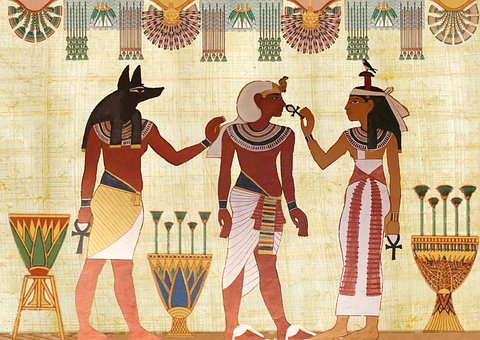Archived Blogs
|
Did you enjoy Labor Day?
You can thank an Egyptian goddess. Ma’at is the goddess of justice, harmony and balance. She is depicted as a winged woman with an ostrich feather on her head. The white feather, also known as “the feather of truth” was used in a ceremony in the afterlife. Osiris, Lord of the underworld and Judge of the dead, would put the "heart of the soul" on a golden scale balanced against the feather of Ma’at. If the soul’s heart was lighter, they had the chance to enter paradise. If the soul’s heart was heavier, it was thrown on the ground where it was devoured by the monster Ammut. Rich or poor, pharaoh or common worker…all were measured. Compared to other goddesses, Ma’at had no temple or clergy. She was regarded more as a concept than an entity. Ma’at became a belief that one should stay in tune with concepts of justice and harmony to keep the universe in order and maintain a cosmic balance. Ma’at became the foundation of the Egyptian society. Rulers would ask her help maintaining balance and if a king was not successful in promoting harmony, it was considered a clear sign that he should not rule. This wasn’t always easy. The first labor strike occurred during the New Kingdom period in Egypt (1570-1069 BC) under the rule of Ramses III. His rule started out well, he navigated relations with foreign rulers and restored temples and monuments. But when the Sea People invaded (I did not make this up), defending the country strained the land’s resources. While they successfully dealt with the invaders, the loss of lives associated with the battle meant less labor in the fields and fewer merchants to sell goods. The economy suffered. Trouble started when the wages to tomb builders and artisans were more than a month late. Instead of looking at what was happening to these payments, officials continued in their preparation for a festival honoring Ramses. When the payments were late again, workers laid down their tools and marched to the city shouting “We are hungry!” This had never happened before, and the officials didn’t know how to handle the situation. They ordered pastries for the workers (which reminded me of Marie Antoinette’s famous line “Let them eat cake” when she was told that the peasants had no bread). They hoped that the whole situation would blow over. It didn’t. Workers were given their back pay, but when they discovered that their next payment wouldn’t be coming, the strikers blocked access to the Valley of the Dead where priests and family members offered food to dead. This was a big deal. The workers were angry, not just because they had not been paid, but because they saw this as a violation of the ma’at. The king and his officials were supposed to take care of the people and he was failing. The success of the strike inspired others to do the same and eventually laborers were recognized for the collective good that they provided to society. Now we have a holiday commemorating workers--Labor Day. What ever happened to Ramses? An article in History. com titled “Multiple Assassins involved in the brutal death of Egyptian Pharaoh” tells the end of his story…. “In this tumultuous political climate, Ramses’ secondary wife Tiye hatched an assassination plot with over a dozen fellow members of the pharaoh’s harem, along with the head of the treasury, a military captain, a butler and the chief royal chamberlain. According to ancient papyri detailing the court trial that followed, the conspirators planned on employing wax figurines and other magic to get past the royal guards, while simultaneously fomenting a rebellion throughout the kingdom.” Obviously, they were successful with that wax and magic stuff…. “…researchers using a high-powered CT scanner on Ramses’ mummy discovered a severe throat gash, covered up by an amulet thought to possess healing powers.”
0 Comments
Leave a Reply. |
Archives
October 2020
Categories |
COPYRIGHT 2017 SUSAN BADARACCO | Site Credits


 RSS Feed
RSS Feed